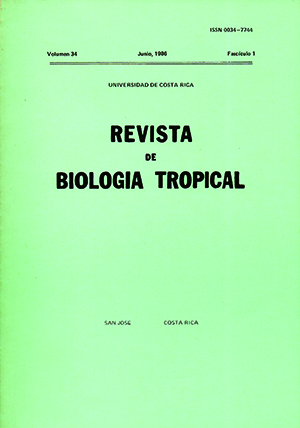Abstract
The use of poly-L-lisine solutions to form policathionic membranes on micro cover glass, acting as an adhesive medium for biological particulate specimens (ej. bacteria, yeast and isolated cells) is described. Adhered specimens to cover glass were fixed, dehydrated, dryed to critical point and covered again with platinum-carbon or gold, and then, they were placed under a scanning electron microscope. Later, a sample was digested in sodium hypochlorite, separating the metal layer representing the replica of sample. lt was collected on a copper grid and it was analyzed by transmision electron microscope.References
Cohen, A.L. 1974. Critical point drying. In: Principles and techniques of scanning electron microscopy. Hayat M.A. (Ed.) Vol. I. Van Nostrand Reinhold Company. New York p. 44-105.
Kaneshima, S.; Y. Kiyasu; H. Kudo; S. Koga & K. Tanaka. 1978. An application of scanning electron microscopy to cytodiagnosis of pleural and peritoneal fluids. Comparative observations of the same cells by light microscopy and scanning electron microscopy. Acta Citol. 22: 490-499.
Mazia, D.; G. Schatten & W. Sale. 1975. Adhesion of cells surfaces coated with polylisine: applications to electron microscopy. J. Cell. Biol. 66: 198-200.
Nickerson, A.W.; L.A. Bulla & E.C. Kurtzman. 1974. Spores. In: Principles and techniques of scanning electron microscopy. Hayat, M.A. (ed.) Vol. I. Van Nostrand Reinhold Company, New York p. 159-180.
Sanders, S.K.; E.L. Alexander & R.C. Braylan. 1975. A high-yield tecnique for preparing cells fixed in suspension for scanning electron microscopy. J. Cell. Biol. 67: 480-484.
##plugins.facebook.comentarios##

This work is licensed under a Creative Commons Attribution 4.0 International License.
Copyright (c) 1986 Revista de Biología Tropical


